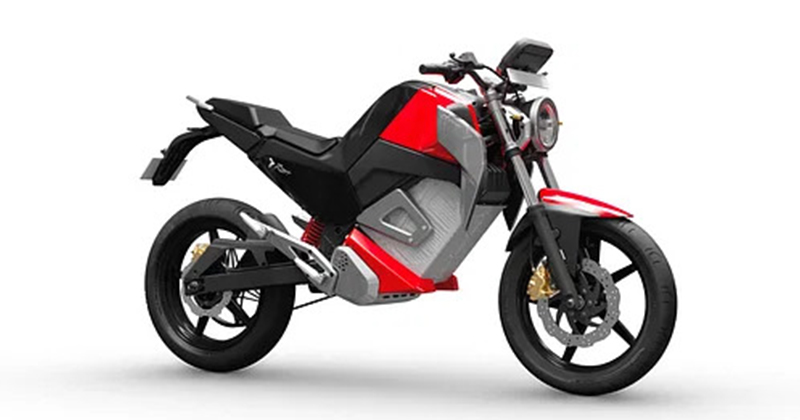- ALL
- TRENDING
- PERFORMANCE
- CHARGING
- BATTERY
- DESIGN
- TECH
- NEWS
Customisation and Comfort: The Role of Frame Design in an Electric Motorcycle

Table of Contents
Explore the crucial role of frame design in electric motorcycles. Learn about the impact of proper frame design on safety, efficiency, and rider experience.
The engineering marvel of electric motorcycles is slowly making its mark worldwide. Given their consistent growth and development over the years, e-bikes are rapidly emerging as a viable option to battle rising air pollution and increased CO2 emissions.
However, only a few know about the element that plays a major role in the smooth functioning of these futuristic vehicles. Surprisingly, the cornerstone of these e-bikes is neither the motor nor the battery pack; indeed, it is the chassis frame design.
Unlike gas-powered motorcycles containing large engines,electric motorcycles rely on compact motors and battery packs. An increased space allows e-bikes to design innovative frame structures, each unique to its model’s characteristics.
What Is a Chassis Frame Design?
The chassis frame of an electric motorcycle is essentially the core structure of the vehicle, resembling the purpose of a human skeleton. Just as the skeletal framework supports and organises the various components of the human body, the motorcycle's frame design serves the purpose of keeping key elements intact.
The chassis frame design is one of the most important phases of a motorcycle development process. The meticulous construction of this frame significantly shapes the motorcycle's performance, handling, overall ride experience, and visual appeal. Any missteps or miscalculation in its design could quickly result in undesirable consequences.
As electric bikes are still in a relatively nascent stage of development, manufacturers in the EV industry are actively exploring innovative designs to enhance performance and introduce new features. A noteworthy example is the Oben Electric bike, which introduced its proprietary ARX frame—a design that has garnered remarkable success in ensuring a seamless and enjoyable ride.
Role of Frame Design in Electric Motorcycles
When it comes to electric motorcycles, the importance of a stable and meticulously designed chassis frame cannot be overstated. Read on to know more about the actual role of an accurate frame design in an electric bike:
1. Structural Integrity & Safety
The fundamental function of the frame design is to maintain the structural integrity of the e-bike. A perfectly constructed chassis frame will centralise the overall mass of the body and facilitate an even front-back weight distribution.
Furthermore, the frame design, if sturdy enough, will absorb sudden impact. A strong build will help distribute impact force across the body during a collision. This mechanism helps ensure the rider’s safety.
2. Performance Optimisation
Frame design plays a pivotal role in optimising the performance of an electric motorcycle. Unlike IC motors that generate power gradually, electric motors deliver instantaneous torque. Hence, the frame must be designed to harness this power efficiently.
A well-engineered frame can enhance the electric motorcycle's agility, enabling swift acceleration and smooth transition between speeds. Moreover, the frame’s sturdiness plays a crucial part in maintaining the stability of the ride, leading to improved handling.
3. Thermal Management
An electric bike's motor and battery pack are usually kept nearby. During longer rides, the motor and battery system radiate heat towards their surroundings. If not managed properly, higher temperatures may hinder safety and performance.
Frame design is important in this respect as well. Their build should be designed to not bring the battery pack and motor too close together. The design should also ensure proper extra heat dissipation to avoid overheating.
4. Customisation & Innovation
The EV segment is still evolving, allowing for unprecedented innovation and customisation. Frame design allows manufacturers to explore new concepts and push the boundaries of innovative form and function.
Frame design can also influence the integration of smart technologies within the motorcycle. As the concept of smart mobility gains traction, designers can find ways to incorporate sensors and communication systems seamlessly into the frame. This will create a more integrated and technologically advanced riding experience.
5. Aerodynamics & Aesthetics
Aerodynamics is a critical aspect of motorcycle design, influencing performance and efficiency. Electric motorcycles allow for greater aerodynamic optimisation since they don't require large intakes or exhaust systems. The shape and proportion of the frame can be designed to integrate with the bodywork to reduce aerodynamic drag.
Innovative frame shapes and fairings improve aerodynamics, enhancing the motorcycle's efficiency and extending its range. Additionally, sleek, ergonomic designs can help improve the overall aesthetics of the bike as well. The frame serves as a canvas for contemporary or futuristic designs, providing a foundation on which aesthetics can be innovatively crafted.
The Bottom Line
Frame design is a pivotal element in shaping the future ofsustainable transportation. From ensuring structural integrity and rider safety to optimising performance and embracing innovative technologies, the role of the frame extends far beyond mere aesthetics.
Experience the epitome of comfortable rides with the Oben Rorr. Its proprietary ARX frame has been designed to ensure higher stability and easy traffic manoeuvring. Check the Oben Rorr electric motorcycle price by visiting Oben Electric’swebsite. Book your Rorr today!




